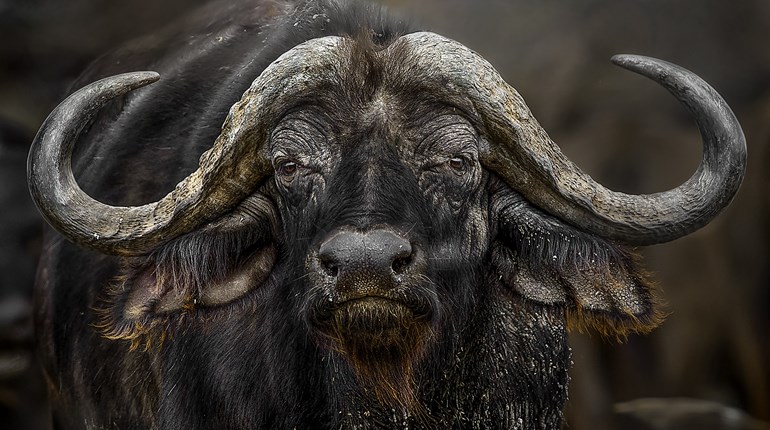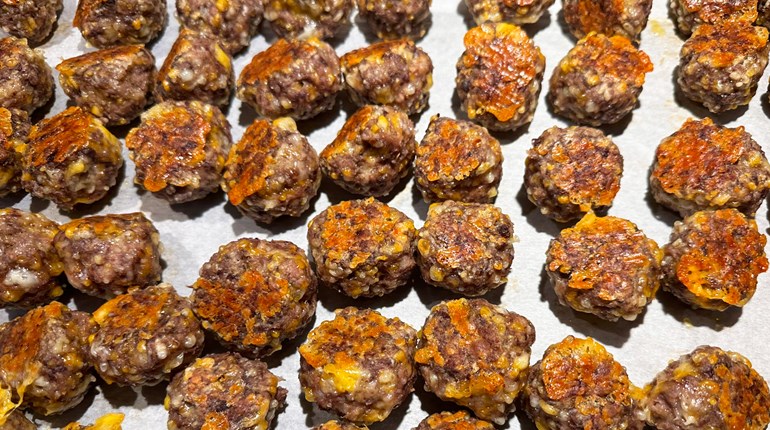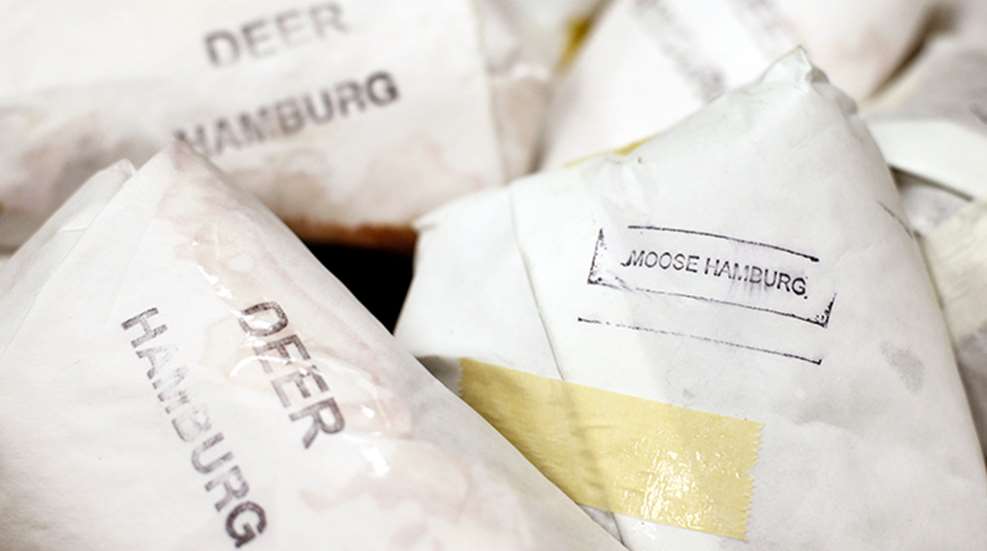
Each year in North America hunters bag 4-6 million whitetail deer, according to Brian Murphy, CEO of the Quality Deer Management Association. Hunters also take many other big-game animals, as well as millions of upland birds, waterfowl and more. We have often printed the astounding amounts of money these efforts generate for conservation via taxes on guns, ammo and other items. And we’ve talked about the monies raised for wildlife management by hunting license fees, Duck Stamps and so on.
Still, we often don’t do a good enough job directly addressing the extent that donated game meat benefits the hungry in North America and how much it does to influence how non-hunters feel about hunting. Part of the reason for this is we don’t know how much game meat is donated to the needy; in fact, we are only beginning to grasp how much wild-game meat is procured and consumed in North America annually.
Many hunters give game meat to friends and neighbors. This has a massive, though off-the-radar, impact on how hunting is perceived by the general public. Anecdotally, I’ve changed the views held by three of my non-hunting neighbors about hunting through gifts of venison. They all were anti-hunters until I started offering them steaks and other cuts of meat from whitetail and other game species I’ve killed. My neighbors now get the connection hunters have to where our meat comes from—they want the meat because they know it is healthy, free-range, wild protein.
Outside such anecdotal examples, all we have are some encouraging numbers from important groups like Farmers and Hunters Feeding the Hungry, which reports that almost 200,000 pounds of wild-game meat was donated through its programs to the needy during the 2017-18 season.
“Forty-four percent of QDMA’s 26,000 members donated venison to the needy last season,” says Murphy. “Our goal is to substantially increase the amount of game meat our members donate to the hungry.”
QDMA members alone donated 1.73 million pounds of venison to the needy during the 2017-18 season. But even these and other figures don’t give us the national picture. Just how much do hunters do for the hungry? And how critical is this for our environment?
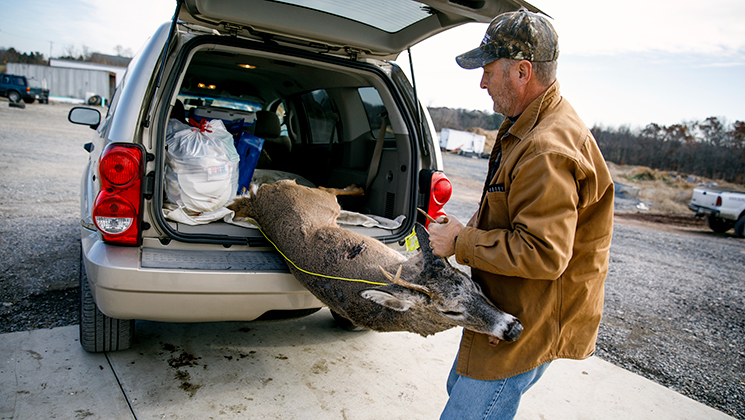
We understand the importance of managing deer populations for forest health, as over-browsed forests undergo major reductions in biodiversity—other species, including non-game and endangered species, suffer when deer decimate the understory. However, even as millions of Americans (hunters and non-hunters) eat game meat, we don’t understand how much this impacts the commercial meat industry.
We know game meat is the “greenest” meat we can consume, as it is naturally raised outside of feedlots, free of hormones and antibiotics. Many non-hunters want venison for this reason, as the meat industry itself goes through rapid changes as more people are willing to pay increasing prices for grass-fed cattle and hormone-free meat.
The thing is it takes a lot of land to raise cattle and other livestock on grass. So, if it wasn’t for game meat, how much more land would have to be cleared to meet this growing demand?
These are important questions that go right to the heart of American conservation and our future.
To answer these big questions, and thereby show the importance of hunting in North America, a new group called Conservation Visions recently began what it calls the “Wild Harvest Initiative.”
“The project’s mission is to measure and analyze the biomass of wild-animal protein harvested by citizens of the United States and Canada,” says Shane Mahoney, the scientist who founded Conservation Visions. The group began the Wild Harvest Initiative in 2015 as a multi-year project. The goals of the initiative include showing the non-hunting public how much hunters do for the needy and for our ecosystems by producing reliable data on how much wild-game meat is procured and consumed in North America. This will help game managers to continue to develop the best ways to manage wild-game populations, and it will show the general public how important hunting is to our wildlife populations and to our health.
A preliminary report from the Wild Harvest Initiative estimated that 815,710,370 pounds of venison are brought home from the field every year in North America. The amount currently being donated by hunters is a small but growing percentage of this total. Meanwhile, over the last few decades an increasing number of groups have created resources to better link hunters with local meat processors and charities so hunters can donate game meat they can’t personally consume.
This is critical, as an estimated 1 in 6 children in America may not know where they’ll get their next meal. In 2016 about 12.9 million children in the U.S. lived in food-insecure households, and 13.4 million children (approximately 18 percent of children in the U.S.) lived in poverty, according to data from Feeding America.
Right now there are no national statistics telling us how many children American hunters already are feeding. Most donations are done locally through churches, food banks and other charities. This, of course, is how America has always functioned. We don’t need federal programs and mandated guidelines for everything. Some comprehensive statistics would, however, be useful. This data would tell the real story of American sportsmen and all we do for the environment and for the hungry among us. It would also help more of us find local resources we can utilize to donate meat or to help in other ways.
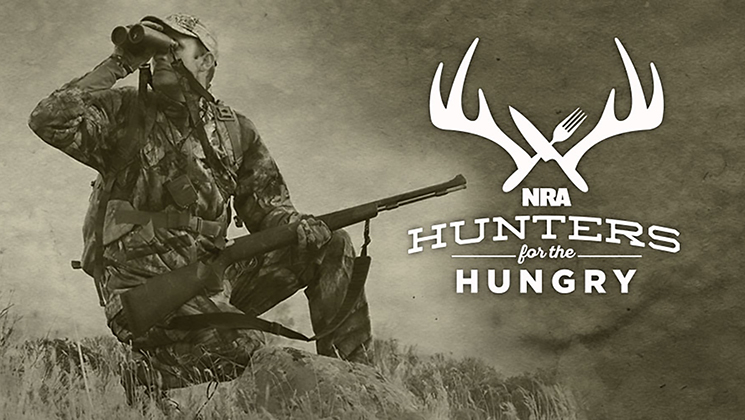
Where to Donate Near You
To help connect hunters with meat processors that cut up and package venison for delivery to local charities, the NRA Hunters for the Hungry initiative developed a resource found at
hfth.nra.org/get-involved. A mapping tool shows where meat processors that provide these services are located in your area, and it lists their contact information.
Farmers and Hunters Feeding the Hungry also has a tool on its website, FHFH.org, which can help you connect with local charities. Additionally, the website presents a wealth of information regarding ways hunters can make a difference for the needy.
Also, many state game agencies provide links to groups that help hunters feed the hungry.













